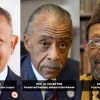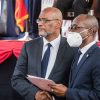
When we heard last week that Darren Wilson, the Ferguson, Mo., police officer who killed 18-year-old Michael Brown, wouldn’t be indicted, there was a collective gasp of despair that soon gave way to protests, tear gas and, in some cases, riots and looting.
Ferguson’s outrage has inspired kindred, mostly peaceful demonstrations across the nation—with young black Americans courageously leading many of these protests and making their mark by fighting for justice. And the attendant anger and anguish are incredibly powerful catalysts. They can compel the nation’s political apparatus into motion to make the necessary, if incremental, changes to improve the lives of black Americans in our cities across the country.
We’ve seen this kind of groundswell before. The Occupy Wall Street movement, also led by young people, put the nation on notice that egregious income inequality was an injustice and unacceptable. Yet it fizzled out because it was unfocused and disorganized and lacked leadership.
The nation can’t afford for the Black Lives Matter movement to be nothing more than a racialized version of Occupy Wall Street, wherein anger was given voice, but change didn’t materialize.
The work is too important.
If the aim is to change outcomes, it’s vital that the movement’s leaders clearly communicate specific and properly scoped political objectives and policy solutions.
Without question, there is value in allowing the nation to observe the pot boiling over. As in Occupy, Black Lives Matter protesters have stood in front of the nation, megaphone in hand, and are demanding to be heard.
The buildup of emotions from the accumulation of small, daily injustices was ignited by larger violations that left black Americans dead. Once properly marshaled, the visuals of the valve releasing can move mountains. But alone, they are insufficient.
To effect change, the entire movement must have the same achievable objectives. Is the aim to improve relations between local law enforcement and black citizens? Is the goal to improve the amount and quality of city services accessible to the black community? Is it really about securing more economic opportunity?
What the objective probably can’t be is an across-the-board ultimatum for the immediate end to racial discrimination. Such a broad objective, like Occupy’s demand to end income inequality, would be fruitless.
This weekend, members of the Ferguson movement released a list of demands, ranging from local actions to diversify the police force to advocating for national legislation against racial profiling. This is a critically important start and will narrow appropriately as the movement continues.
Ultimately, though, it comes to this: If the mayor of each city where protests are occurring were to approach the gathered mass and ask what could be done to address its concerns, the answer from the first protester should match the answer of the 1,000th one.
And reaching consensus about who the leaders are is essential, because they serve as the movement’s voices. Leadership cannot be crowdsourced in the way that Occupy attempted. Elected officials, police forces and corporations cannot negotiate with a movement’s anger and passion. They need individuals to discuss problems and solutions with, and these individuals must be empowered to speak for the group. This narrowing of representative voices may be challenging, particularly in the age of social media, but it is essential. Solidarity can come from the digital masses, but leadership can’t.
The brave young Americans out protesting today are ensuring that perpetual injustice and disenfranchisement do not go unaddressed. Those who marched in the ’60s are remembered because of the change they brought in national education, voting rights, housing and employment policies. And though disparities persist, the victory that was the Civil Rights Act of 1964 is not immaterial.
And today’s protesters do not have the luxury of the Occupy Wall Street demonstrators (pdf), who were overwhelmingly white and college-educated, with not much fear of their children being shot dead in the streets by the police.
For the Black Lives Matter movement, it is very much a life-or-death proposition.
As such, those out protesting know that it is not enough to be outraged. In order to succeed, today’s emotion must inspire action that creates meaningful change in tomorrow’s policy.
Theodore R. Johnson III is a writer, naval officer and former White House fellow. His writing focuses on race, society and politics. Follow him on Twitter.















